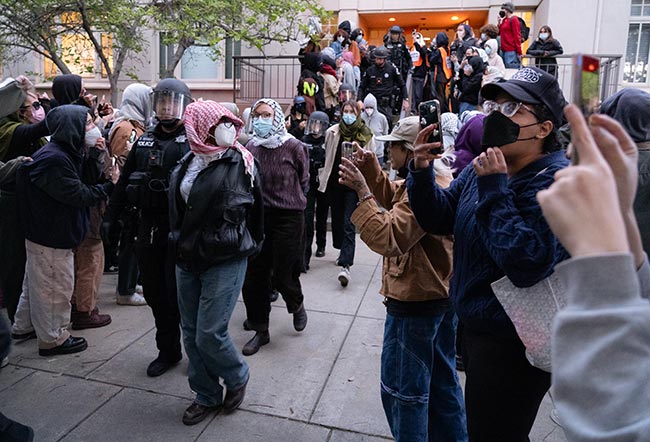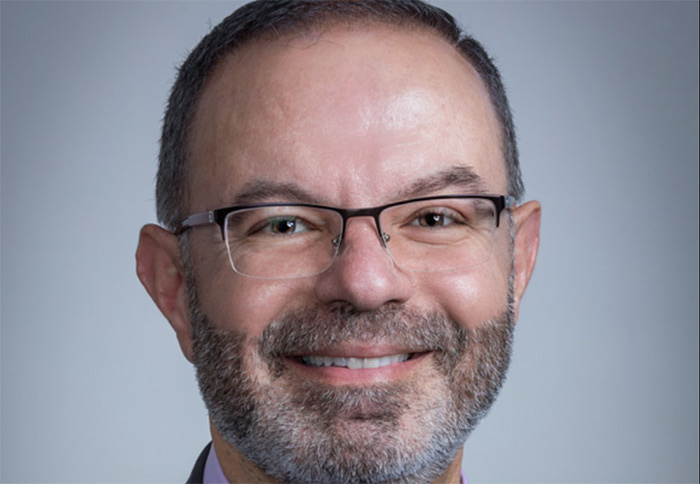Pasadena family protest Danbury enrollment denial
Pasadena resident Anne Bigley, along with 11 friends and family members, spoke to the Claremont Unified School District Board of Education at its last meeting Thursday, September 21.
Roughly 30 supporters filled the CUSD board room holding handmade signs and breaking into chants of “Let him learn!” during public comment to protest what they said was unfair treatment of Ms. Bigley’s son Christopher Frealy.
More highlights from the school board meeting
Christopher—who has cerebral palsy and accompanying medical issues—has attended and still attends an after-school conductive education program at Danbury School, which is the only appropriate educational program for her son’s disabilities, Ms. Bigley said.
The after-school program at Danbury is run by a private company called ConductAbility out of Glendora, explained Jim Elsasser, CUSD superintendent.
“They have a consultant agreement with CUSD that allows them to use a classroom at Danbury after school hours for their private program,” he said.
The private after-school program is not run by CUSD nor do district employees work at the program. It is open to students from three years old to young adults and meets four afternoons per week after the close of the regular school day.
Ms. Bigley, who filed a due process claim against CUSD and the Pasadena Unified School District on July 24, 2017, thinks Claremont wasn’t forthcoming about why her son could not be enrolled full-time this fall at Danbury. An administrative law judge has since dropped CUSD from the due process complaint.
In a June 14, 2017 letter addressed to Mr. Elsasser, Ms. Bigley relates that she initially expressed interest in Christopher attending Danbury in a March 2016 email to Maggie Guerrero-Russell, CUSD special education program specialist.
Ms. Russell, according to the letter, took Ms. Bigley on a tour of Danbury in May 2016 and said that the family would need to have Christopher’s Individual Education Plan (IEP) submitted to begin the transfer process.
A series of meetings were held at PUSD, which included several IEPs, to outline Christopher’s education plan for the 2017-2018 school year.
“Pasadena Unified offered placement and services at Danbury through the IEP process and we accepted and agreed with that IEP,” Ms. Bigley wrote.
By her own admission, no CUSD representative was invited or attended those meetings, and she never went to the CUSD district office to officially apply or to enroll Christopher at Danbury. A series of emails to CUSD staff, most of which went unanswered, were attached to the letter submitted to Mr. Elsasser.
Still, Ms. Bigley maintains that she, along with representatives from the Pasadena Unified School District, was “assured that there was a space available” for her son at Danbury for the 2017-2018 school year.
Ms. Bigley and her son live in Pasadena, which puts them with the Pasadena Unified SELPA. SELPAs—or Special Education Local Plan Areas—are made up of a consortium of school districts and county school offices that oversee special education programs. CUSD, on the other hand, is in the East San Gabriel Valley SELPA.
Students with disabilities who live within the school district boundaries of Azusa, Baldwin Park, Bassett, Bonita, Charter Oak, Claremont, Covina-Valley, Glendora, Pomona, Walnut Valley and West Covina are all part of the East San Gabriel Valley SELPA.
California law requires that a student attend school in the district where their parents reside. However, some students may attend schools outside their home district through an inter-district transfer, a fairly common practice among Los Angeles County schools.
For students with disabilities where specialized programs and staff are sometimes required to deem a program “appropriate” under the Individuals with Disabilities Act, a SELPA may enter into an agreement with another SELPA or a school district to allow a student to attend a program outside their home district.
Prior to 2014, a population of orthopedically handicapped and medically fragile students within Claremont’s SELPA were educated through the Los Angeles County Office of Education (LACOE). The county distributed funding, hired staff and provided space for students in need of specialized programs, factoring in a student’s deficits and strengths.
With the county program in place, Mr. Elsasser said CUSD honored inter-SELPA transfer students not just to Danbury, but in special education programs district-wide.
In the 2014-2015 school year, things changed when CUSD felt it could provide a more meaningful educational experience than what the students were receiving through the county program.
At a June 2014 CUSD board meeting, as reported by the COURIER, Danbury had approximately 75 kids with physical disabilities and/or health impairments and was preparing for approximately 10 new students after the county take-back.
“The SELPA thought we could run the programs cheaper and better, rather than having them administered by LA County,” Assistant Superintendent of Student Services Mike Bateman said at the 2014 meeting.
And, according to the East San Gabriel Valley SELPA website, the cost of contracting with the LACOE had risen sharply, largely due to the escalating overhead of running county offices in Downey.
“That is when we stopped taking any new inter-SELPA agreements due to space issues and our obligation to serve our SELPA students,” Mr. Elsasser said.
In June of 2017, Ms. Bigley made repeated calls to CUSD, PUSD and the East San Gabriel Valley SELPA regarding Christopher’s transfer approval, which still needed to be signed by the PUSD superintendent.
“In an effort to track down the inter-SELPA agreement, I contacted [Maria Davis] of the East San Gabriel Valley SELPA,” Ms. Bigley wrote. “She informed me that she had sent the agreement to Pasadena for the superintendent’s signature.”
The agreement was never signed or submitted to CUSD. Had PUSD fulfilled that obligation, it may have learned that CUSD had discontinued inter-SELPA transfers in 2014.
On June 13, Ms. Bigley was informed by the Pasadena Unified School District that there was “no space” for Christopher at Danbury.
As reported by the COURIER in 2013, conductive education centers around the concept of “neuroplasticity,” or the idea that the brain can reorganize itself if taught how to do so. Conductive ed teachers incorporate rhythm and movement with verbal tasks to help the brain form new neural connections. The story focused on the White family, who traveled from Chicago in 2010 to spend a summer in Claremont so their son Payton could attend Danbury.
“We fell in love with the program,” Ms. White said. “I called my husband and told him we have to move.”
In June 2011, the Whites purchased a home in Claremont solely to have their son attend the program, which at that time was only offered in a handful of cities across the nation.
For the time being, moving to Claremont or working with the Pasadena school district to open its own conductive ed program are the only solutions for a vulnerable population of kids in need of this highly-specialized program.
For the Bigleys, moving to Claremont isn’t an option. And given the CUSD/SELPA agreement since the LACOE take back, the district’s hands are tied.
Mr. Elsasser explained the district’s position in an email provided to the COURIER by Ms. Bigley. Mr. Elsasser was responding to Ms. Bigley’s friend who had contacted him on behalf of the family.
“I understand that your questions come from a place of concern for a child, which is both honorable and appreciated,” he wrote. “While the district and SELPA always seek to work collaboratively with our colleagues and neighboring school districts throughout the San Gabriel Valley, given the purpose of and resources allocated to SELPA programs, our primary responsibility is to ensure access to this program to residents of the district and our SELPA-partnered districts.”
—Kathryn Dunn
editor@claremont-courier.com








0 Comments